34 She/Her Sea/Green Witch🌊 🌙 🌳 Finding my highest self through my connection with nature, the elements and energy of the universe. Hellenic Polytheist🦉Athena♏️Sun ♋️Moon ♏️Rising
Don't wanna be here? Send us removal request.
Text
Epithets: Krataiis
Epithets: Krataiis/Kratais: The Strong, the Mighty, or the Rocky.
Many people have heard of Kratos, thanks to the God of War franchise, but few realize that there are Gods by that name. Kratos may be God of Force, one of the beings in the service of Ares, but Kratais is much more complicated.
…sail too close Skylla’s disgusting hiding place - deadly Ausonian Skylla, whom Hekate, that night wanderer known as Kratais, once bore to Phorkys – lest with horrible jaws agape she spring on them and destroy the pick of the heroes… - lines 827-831, Book IV of the Argonautika, Apollonios Rhodios, trans. Peter Green.
Homer tells us that Kratais is the mother of Skylla, the monster of the deep that threatens Odysseus’ ship. Apollonios Rhodios believed that Kratais was a gloss for Hekate. Akousilaos believed similarly. This suggests that Hekate has a relationship with Phorkys, one of the Gods of the Sea. Eustathius likewise suggests that Skylla’s mother was Hekate.

There are other sources that believe Kratais to be a separate being, a Goddess of Might.
I find it personally interesting that Skylla could be Hekate’s daughter, as one of the stories tells us that Skylla was once a beautiful woman, until Kirke (Hekate’s priestess and in some stories, Her granddaughter) poisoned her and turned Skylla into the many headed-monster that haunts the Straits of Messina.
Theoi tells us that Krataiis is Keto, the mother of many monsters, and grim forces. According to Hesiod, Keto gave birth to Phorkys’ children, the Graeae, the Gorgones, Ekhidna, and the Drakones. This Goddess is the child of Pontos and Gaia, a daughter of Sea and Earth. If Hekate and Krataiis be the same, Hekate has brought many things into the world, much like the ocean from whence life comes.

As part of the portfolio of powers that Hekate bears, the epithet emphasizes the Trioditis as a power of the Ocean and of a great magnitude. In the 19th century the epithet was also understood to represent Hekate’s power over the restless dead.
To my mind, it seems that the path to connect with Hekate Krataiis is through the sea. This is hardly the only oceanic epithet of my Lady, but it is one of the more overwhelming ones. It may be appropriate to give Her offerings at the seashore, or to offer salt water. I would also recommend offering activities which serve to strengthen you in some way, whether that be a physical strength or some other sense of strength. To embody Kratais.
Sources:
Theoi.com
Apollonios Rhodios. The Argonautika: Expanded Edition, trans. Peter Green. Univ. Cali, 2007. The Encyclopaedia Britannica, Vol. 11, Werner, 1898. Fontenrose, Joseph Eddy. Python: A Study of Delphic Myth and Its Origins, Univ. Cali, 1959. Harrison, Jane Ellen. Myths of the Odyssey in Art and Literature. Rivingtons, 1882. Knotmagick. “Queen of Heaven, Sea and Underworld,” blog, at: https://knotmagick101.wordpress.com/2014/08/15/queen-of-heaven-sea-and-underworld/
Images:
“The Sea Monster Skylla,” terracotta, 5th c. BCE, found on Aegina. Via Wikicommons: https://commons.wikimedia.org/wiki/File:Skylla_BM_621.jpg Late Roman mosaic from the Trajan Baths of Acholla: Phorcys (middle), Ceto (right), and poss. Triton or Thaumas (left). From the Bardo Museum, Tunis. Via wikicommons: https://commons.wikimedia.org/wiki/File:Phorkys_Mosaic_Bardo.jpg
45 notes
·
View notes
Text
Hekate's Many Names Part 1 of 3
Hekate’s Many Names

Kleidoukhos, Dadophoros, Eilytheia, Basillea, all names that Hekate has born through Her history. Just four of well over a hundred titles and names and qualifiers and descriptors. Each gives us a different perspective of our Goddess, though no name is sufficient to encapsulate Hekate who is the Soul of the World. Epithets are perspectives, new or old, that Her followers have found appropriate. Some, like Perseia, describe elements of Her mythos. Others may tell us where She had a temple or a cultus, such as Zerynthia. We learn via epithets that She is bright-coiffed, beautiful, maidenly, or angry-voiced, wild, and sepulchral.
When a priest or a devotee puts pen to paper and strives to describe Hekate in the poor terms of language, epithets can provide the means to begin.
I have arranged my study of epithets in terms of veracity, not because I only want to use the oldest and most original, but because I believe it is important to recognize how Her titles and descriptors have grown and changed as the world as shifted. Being honest about whence an idea originated and when allows for a greater grasp of what is being created today.
I owe many people for this project. Florian Schlie, Tina Georgitsis, Sorita d'Este, Tara Sanchez, Natalie Baan, Melissa McNair, Nikki Salvatore, Katerina Dogiama-Azeri as well as the community of the Covenant of Hekate as a whole, and the group known as Hekate’s Crossroads as well. Without them and their support, I never would have created this project.
If you can assist in this work, please email me at [email protected] with your insights, preferably with a source, and permission whether I can mention your name in later editions of this project.
Ultimately, my hope is that this on-going exploration of Hekate’s names helps the community of Hekate’s devotees to find inspiration and insight into our vast and enigmatic Goddess. May it be a blessing upon your path, a guidepost, and a light in moments when you need it.
EDIT: Updated Feb. 13, 2016 with almost 100 new epithets, thanks to this wonderful list. Some of the entries didn’t pass my personal standards for making it into the most historical list, but they are all valuable, and all will probably eventually be added to the first category. My kingdom for a good original Greek copy of the PGM… that I can afford.
EDIT: updated 5/27/2016 with a slew of new epithets.
EDIT: updated 8/13/2018 with a few new epithets. Thanks to Cyndi Brannen from Patheos’ Keeping Her Keys for the help with these!
Epithets with Historical Precedence
?: Subduer of All: Greek Magical Papyri Hymn IV 2714-83 ?: Fawn-slayer: Hymn to Selene-Hekate-Artemis, Greek Magical Papyri IV 2714-83. ?: Greatest Overseer: Hymn to Selene-Hekate-Artemis, Greek Magical Papyri IV 2714-83. ?: Who Pours Forth Arrows: Hymn to Selene-Hekate-Artemis, Greek Magical Papyri IV 2714-83.
?: Adorned in Full Armor: The Chaldean Oracles. See Stephen Ronan. ?: Holds the Helm of All: The Chaldean Oracles. See Stephen Ronan. ?: Dog-slaying: Lycophron. See also Simon Hornblower. ?: Mistress of Dreams. See Stephen Ronan and Fontenrose’s Python. ?: Swordbearing: See Stephen Ronan and Sarah Iles Johnston.
A
Abronoe: Gracious: PGM IV 2441-2621. See Pachoumi’s “A List of Epithets from the Greek Magical Papyri…”. Admetos: Unconquered: PGM IV 2708-2784. Also said of Atalanta. Aenaos: Eternal, Ever-flowing: PGM IV 2785-2890. Agallomenen elaphoisi: Rejoicing in Deer: The Orphic Hymn to Hekate. Agia: Sacred, holy, saint: PGM IV 2241-2358. Aglaos: Radiant, bright, beautiful, pleasing: PGM IV 2241-2358. As a term, aglaos connotes festivity and song. Agriope : Wild-eyed, Fierce-faced, Savage-watcher, wild-voiced : A name associated with Eurydice, Orpheus’ wife, likely came to be attached to Hekate when the two were conflated. From Orpheus and His Lute: Poetry and the Renewal of Life by Elisabeth Henry, SIU Press, 1992 p. 3. Also, Maass’ Orpheus, 1895. Aidonaea: of the Underworld (lit. of Hades): PGM IV. 2708-84 and PGM IV. 2855. Beware spellings such as Adonaea, which more properly refers to the gardens dedicated to Adonis. Aidonia also may apply to a site in Mycenaea. Aimopotis: Blood-drinker, murderer. Footnote from Catharine Roth discussing the term and its association with Hekate on www.stoa.org Aionaios: Eternal: PGM IV 2241-2621. Aizeos: Vigorous: PGM IV 2241-2358. Akrie: Extreme: PGM IV line 2277. Aktinochiatis: Radiant-haired, with rays for hair: PGM IV 2241-2358. Aktiophis: of unknown meaning: various hymns to Selene and Hekate in the Greek Magical Papyri. Alexeatis: Averter of Evil: A 5th c. BCE inscription to Enodia mentioned by Sarah Iles Johnston in Restless Dead. Alkimos: Strong, stout, brave, powerful: PGM IV 2241-2358. Ambrotos: Immortal: applied to all the Gods and many Titans. PGM IV 2241-2358. Ameibousa: One that transforms: Oracle Table from Pergamon dedicated to Hekate. (Special thanks to Florian Schlie for the information.) Amphiphaes: Circumlucent: Proclus. Damascius. trans. by Stephen Ronan. Amphiprosopos: Double-faced: The Chaldean Oracles, also Reading Plotinus: A Practical Introduction to Neoplatonism by Kevin Corrigan. Amphistomos: Double-mouthed. Proclus’ In Timaeus. Anassa: Queen: The Orphic Hymn to Hekate. Applied to a variety of Goddesses. Anassa Eneroi: Queen of the Dead: A title which is perfectly appropriate, though historically was most often applied to Persephone. theoi.com/cult/hekatecult.html Angelos: Messenger: The Chaldean Oracles. Associated with numerous Gods. Karl Kerenyi discusses the shared role of Angelos between Hermes and Hekate in Hermes: Guide of Souls. Antaia: She Who Meets, Besought with prayers: Sophocles’ Rootcutters. Aoroboros: Devourer of the Untimely Dead: PGM IV 2785-2890. Apanchomene: The Hanged One, The Strangled, One Who Hanged Herself: assoc. with Artemis in particular, but Farnell mentions a story about a woman Artemis named Hekate after she hanged herself. Aphrattos: Unnamed One: In “Taranto” by Enzo Lippolis, Salvatore Garraffo, Massimo Nafissi by the Instituto per la Storia e l'Archeologia della Magna Grecia, 1995, p. 194- 5.
Apotropaios: Averting, Averter: Supplementum epigraphicum Graecum (SEG) 42 1816. Archikos: Royal: The Chaldean Oracles, xx (Psellus) and xxbis. See Ronan. Aregos: Helper: PGM IV 2241-2358. Ariste: The Best: See Zeus: A study in ancient religion which posits that Ariste Chthonia is Hekate. The epithet also applies to Artemis and Demeter. Arkyia: Entrapper: PGM III.1-164 Astrodia: Star-coursing, Star-walker: PGM IV 2441-2621. See Pachoumi’s “A List…” Atala: Tender, delicate: Hesiod’s Hymn to Demeter. Atala Phroneousa: Gay-Spirited: The Homeric Hymn to Demeter. Atasthalos: Reckless, Presumptuous, Wicked: PGM IV 2241-2358. Athanatos: Immortal, of Immortal Fame: PGM IV 2241-2358. Autopheus: Self-Begotten: PGM 4.2274. Azonos: without Borders: See The Chaldean Oracles, xx (Psellus), Ronan. Azostos: Ungirt, without a belt: The Orphic Hymn to Hekate. B
Baridoukhos: skiff-holder, barque-holder, the one who has a boat: PGM IV 2241-2358. Basileia: Queen, Princess: The Orphic Hymn to Hekate. Also, Farnell’s Cults of the Greek States vol. 2, p. 507. Applied to a variety of Goddesses. Boopis: Cow-eyed: PGM IV.2708-84. Borborophorba: Eater of Filth: Greek Magical Papyri, 1402, 1406. Brimo: Angry One, The Terrifying, of Crackling Flames : Apollonios Rhodios 3.861-63, 1246. Also applied to Persephone, Demeter, and Cybele. Bythios: Abyssal, of the Deep: PGM IV 2441-2621. Can also mean ‘of the Sea,’ but scholars have typically interpreted this as a reference to Chthonic powers in this context.
C
Charopos: Fierce, grim, flashing, bright, having blue-grey eyes, of the Sea: PGM IV 2241-2358. I nearly didn’t put this one on list A because of the wide range of meanings, and the lack of a notation to explain the translator’s choice of words. Chrysopis: Golden-faced: PGM IV 2241-2358. Applied to many Gods, including Leto and Helios. Chrysosandalos: of Golden Sandals: The Hymn of Hekate-Erechkigal, Greek Magical Papyri LXX. Chrysosandalaimopotischthonia: Goddess of the Lower World wearing golden sandals and drinking blood: found on a curse tablet. Chrysostephanos: Golden-crowned, crowned with splendor: PGM IV 2241-2358. Also given to Herakles and Aphrodite. Chthonian: of the Earth: The Orphic Hymn to Hekate.
D
Dadophoros: Torchbearer: Well-attested in sculpture and coins. Daeira: The Knowing One, Teacher: A nymph and lover of Hermes who was sometimes conflated with Persephone and Hekate, according to the Perseus Project. Daidalos: Cunning: PGM IV 2241-2358. Damasandra: Subduer of men: PGM IV 2785-2890. An epithet for the Moon. Damnameneia: She who Subdues by Force: PGM IV lines 2850-1. See Pachoumi. Daspleti: Frightful: PGM IV. 2785-2890. Deichteira: Teacher: PGM IV 2241-2358. See Pachoumi’s. Deinos: Terrible: The Chaldean Oracles, xli (Proclus), Ronan. Despoina: Mistress, Lady: From Aeschylus, Fragment 216, Hekate is called Lady. Despoina was also an Arkadian Goddess of Fertility and daughter of Demeter in her own right. Thanks to Sophia Kirke for the insight! Many Goddesses were called Despoina. Dione: The Goddess: Dione is a goddess in her own right that came to be conflated with Hekate. From the Oracle Table of Pergamom. Source: Hekate die dunkle Gottin by Thomas Lautwein. Dodonie: of Dodona: PGM IV line 2275. See Pachoumi. Doloeis: Astute, subtle, wily, cunning: PGM IV 2708-2784. Drakaina: Serpent/dragon: PGM IV 2241-2358.
E
Eidolios: Ghostly, fantasmal: PGM IV 2241-2358. Eileithyia: nurse of Childbirth: Goddess of midwives, conflated with Artemis and Hekate. Einalian: of the Sea: The Orphic Hymn to Hekate. Einodia Thygater Demetros: Daughter of Demeter, who is of the Road: See Farnell, who attributes the phrase to Euripides. Ekdotis: Bestower: The Chaldean Oracles. Lewy and Des Places applies this to Had, the First Father, but Johnston and Ronan say it applies to Hekate. Ekklesia: of the Assembly: See Ronan. Elaphebolos: Shooter of Deer, Deer-huntress: PGM IV 2441-2621. Also belongs to Artemis. Elateira: Driver, Charioteer: The Chaldean Oracles. Originally an epithet given to Artemis. Ellophonos: Fawn-slayer: Hymn to Selene-Hekate-Artemis. PGM IV 2714-83. Empousa: Empusa: The Scholiast on Apollonius’ Argonautika, Rohde’s “Hekate’s Hordes.” Empylios: at the Gate: See the Orphic Argonautika 902, as well as an inscription in a museum associated with the Temple of Zeus in Nemea. Empyrios: Empyrean: The Chaldean Oracles. See Ronan and Johnston. Enodia: of the Path: Pausanias’ Description of Greece 3.14.9, Hippocrates Of Sacred Disease, and The Orphic Hymn to Hekate. Ephodia: travelling expenses… of uncertain appelation with Hekate. Inscription in a museum associated with the Temple of Zeus in Nemea. Ephthisikere: Destroying Death: PGM IV line 2852. Betz keeps this as a Voces Magicae. Epigeioi: of the Earth: a class of deities that includes Hekate, according to Artemidorus. Epiphanestate Thea: the Most Manifest Goddess: “The Priviledges of Free Nontributary States” by Sulla, 81 BCE. Epipurgidia: on the Tower: Pausanias’s description of Athens. Episkopos: Guardian, one who watches over, overseer: PGM IV 2708-2784. Epiteichea: The Stronghold, Fort: see Der Apollon-Delphinios-kult in Milet und die Neujahrsprozession nach Didyma by Alexander Herda. Erannos: Lovely: The Orphic Hymn to Hekate. Ergatis: Energizer: The Chaldean Oracles. Lewy and Des Places applies this to Had, the First Father, but Johnston and Ronan say it is Hekate. Erigeneia: Daughter of the Morning, Early-born. PGM IV 2785-2890. An epithet for the Moon. Erototokos: Producing Love, who bore love, bearer of love: PGM IV 2441-2621. Also an epithet for Aphrodite. Eukoline: Good tempered: grave stele in Athens. Additionally Kallimachos refers to Hekate Eukoline. Additionally, could be applied to Eileithyia. Eupatereia: Noble-born: PGM IV 2708-2784. Eurippa: Horse-finder: Robert Brown, Semitic Influence in Hellenic Mythology, Williams and Norgate, 1898. Eurostochos: Wide-Aimed: PGM IV lines 2281-2
G
Geneteira: Mother: PGM IV 2785-2890. Gigaessa: Giant: PGM IV 2708-2784. See Pachoumi’s “A List…” Gorgo: The Grim, the Gorgon: A.B. Cook’s study of Zeus, vol.3, part 2, and Rohde’s “Hekate’s Hordes.”
H
Hecatoncheires : Hundred-handed: The Chaldean Oracles Hegemonen: Guide: The Orphic Hymn to Hekate. Hieros Pyr: Holy Fire: The Chaldean Oracles, See Johnston and Ronan. Hippokyon: Mare Bitch, Horse-dog: PGM IV 2441-2621. An epithet for the Moon. Hippoprosopos: Horse-Faced: PGM IV 2441-2621. An epithet for the Moon. Hypolampeira: of unknown meaning: hypolamp* words generally have to do with the quality of light, hypolampros translates as ‘rather bright’ as of the stars, while hypolampes suggests ‘shining with inferior light’: Thomas Lautwein. lampe- implies lamp or light.
I
Iokheaira: One who shoots Arrows: PGM IV 2241-2358. Shared with Artemis. Indalimos: Beautiful: PGM IV 2241-2358. Perhaps related to Indalmos, which suggests form.
J
K
Kalligeneia: Bearing beautiful offspring: PGM IV 2785-2890. An epithet also used to describe Demeter in the Thesmophoria. Kalliste: Fairest: Thomas Lautwein says the PGM refers to Hekate as Kalliste. Kapetoktypos: Tomb-disturber, causing the noise of lamentation: PGM IV 2785-2890. Betz translates it as “who makes grief resound,” and Pachoumi as “the one who makes the graves to resound.” Kardiodaitos: Heart-Eater, Feasting on Men’s Hearts: PGM IV 2785-2890. Kareia: of Karia, Kraus. Karko: Lamia: See Rohde’s “Hekate’s Hordes.” Katachthonia: Subterranean: Demotic Text 74. Kata(kam)psypsauchenos: Bending down necks that show off: PGM IV lines 2718-9. Keratopis: Horned-faced, Horned-looking: PGM IV 2441-2621. Keroeis: Horned: PGM IV 2785-2890. Khthonia: Of the Underworld; Of the Earth: The Orphic Hymn to Hekate. Kleidoukhos: Keeper of the Keys: The Orphic Hymn to Hekate. Klothaie: Spinner of Fate, of Klotho: PGM IV 2241-2358. Komas: of the Revel: The Chaldean Oracles, see Ronan. Kore: Maiden: The Orphic Hymn to Hekate. Kourotrophos: Child’s nurse, nurse of youths: The Orphic Hymn to Hekate. Shared with Artemis and Eilytheia. Kratais: The Strong One, of the Rocks: Apollonius of Rhodes’ Argonautika. Krokopeplos: Saffron-cloaked: The Orphic Hymn to Hekate. Kydimos: Glorious: OGM IV 2241-2358. Also the name of several priests known from inscriptions. Kynegetis: Leader of Dogs: Orphic Hymn 36.5. Kynokephalos: Dog-headed: A.B. Cook’s Zeus and Ronan. Kynolygmate: Howling like a Dog, who howls dog-like: PGM IV 2441-2621. Kyon Melaina: Black Dog: Thomas Lautwein says this epithet is to be found in the PGM. Kyria: The Powerful, Supreme: A.B. Cook’s Zeus and Ronan.
L
Laginitis: of Lagina, possibly: The city of Idrias had a temple to Hekate Laginitis. : See A History of Discoveries at Halicarnassus, Cnidus, and Branchidae, vol. 2 by Charles T. Newton, R.P. Pullan, 1863. Lampadephoros: Lamp-bearer, torch-bearer, who warns of nighttime attack. : Associated with the Mysteries of Phrygia. The Cities and Bishoprics of Phrygia by William Ramsay. Suidas describes a statue dedicated to Hekate the Torchbearer for saving the city of Byzantium from Philip of Macedon. Lampadios: Torchbearer, Lampbearer: PGM IV 2441-2621. Leaina: the Lioness: Porphyry, Fragmenta III, 18. See also Kraus’ Hekate, p. 32-33. Leontoukhos: Holding A Lion: Psellus’ Chaldean Oracles fragment 148. Michael Italicus Letter XVII, 182.26. Leukophryne: white-browed or of the white-browed hill: The Prognostikon of Pergamon. See Thomas Lautwin. Closely associated with Artemis at Magnesia, might come from conflation. Limenitikos: of the Harbor, Harbor Goddess: PGM IV 2441-2621. Liparokredemnos: of the bright-headband, Bright-coiffed: The Homeric Hymn to Hekate. Lothaie: The One with Crest: PGM IV line 2267. Lyko: Wolf-formed: PGM IV.2241-2358
M
Maera: Shining: In Ovid’s Metamorphoses connects the story of a woman Maera turned into a dog with Hekate. Makairapos: Blessed One: PGM IV 2441-2621. Mastigophoros: Scourge-bearing: The Chaldean Oracles. See Ronan and Johnston. Medusa: Protector: For information on the relationship between the Gorgons and Hekate, see Ronan. They are definitely related. And of course, the Gorgones face-mask was used to fend off evil, as on Athene’s Aegis. Medousa’s name derives from medo, meaning to guard or protect. PGM IV 2708-2784. Meisoponeros: Vice-hating: from a Capitoline inscription that is mentioned by Farnell. Also see Kopp’s Paleoepigraphica. Megiste: Greatest: Sarah Iles Johnston mentions this Hellenistic Carian epithet in Restless Dead, p. 206. Melaine: Black: A stele in Phrygia calls Black Hekate’s curse upon those who intrude upon the tomb. Melaneimon: Black-clad, wearing black: PGM IV 2441-2621. An epithet associated with the Furies. Melinoe: Soothing One: The Orphic Hymn to Melinoe, in which she is described as sharing a lot of traits with Hekate. Found as an epithet for Hekate on the Prognostikon of Pergamon in Thomas Lautwin’s Hekate: die dunkle gottin. Mene: Moon: See Rohde. PGM IV 2241-2358. PGM IV 2441-2784. Mitrie: With a Headband: PGM IV lines 2274-5. Monogenes: Only Child: Hesiod’s Theogony, 11.404-452. Mormo: She-monster. See Cook and Rohde. Munychia: of unknown meaning, possibly of the village Munychia. An epithet of Artemis associated with the Attic military port of the same name. See Women of Classical Mythology by Robert Bell, Oxford, p.312. Also Farnell, p. 473.
N
Nekyia: Mistress of Corpses: PGM III. 1-164. Nerterios: Infernal, Nether One: PGM IV 2441-2621. Nerteron Prytanin: Mistress of the Dead: Thomas Lautwein. The Nerteroi are Chthonic Spirits. Nekuia: Mistress of Corpses: PGM III 1-59. Noeros: Intellective: The Chaldean Oracles, vii. Ronan. Nomaios: Pastoral: PGM IV 2241-2358. Nykhia: Nocturnal, of the Night: PGM IV 1390-1495. Nyktairodyteira: She that rises and sets by night, Night-riser and setter, who rise and set by night: PGM IV 2441-2621. Commonly given to the Moon. Nykteria: of the Night: The Orphic Hymn to Hekate. Nykti: of the Night: From the Oracle Table of Pergamom. Source: Hekate die dunkle Gottin by Thomas Lautwein. Nyktipolos: Night-wandering: Orphic Argonautika. Nyktophaneia: Night-shining: PGM IV 2441-2621. Nymphen: Bride: The Orphic Hymn to Hekate. Nyssa: Goal, beginning, turning post, ambition: PGM IV 2241-2358.
O
Oistroplaneia: Spreader of Madness, Causing the Wanderings of Madness: PGM IV 2785-2890. Olkitis: Who Draws Swords: PGM IV lines 2267. Opaon: Follower: The Homeric Hymn to Hekate. Ophioplokamos: with Snaky-Curls, Coiled with Snakes: PGM IV 2785-2890. Oroboros: Tail-Eating: Defixiones Tabellae 41, part of a spell incantation. Ourania: Celestial, Heavenly: The Orphic Hymn to Hekate. Ouresiphoites: Wanderer in the Mountains: the Orphic Hymn to Hekate.
P
Paionios: Healer: PGM IV 2241-2358. Also applied to Apollon. Name of the sculptor of the Nike of Samothrace. Pammetor: Mother of All: PGM IV 2785-2890. Pandamateira: All-tamer, all-powerful, all-subduer. PGM IV 2708-2784. Pandina: possibly something about whirling or rotating, but largely unknown. : See The Numismatic Circular and Catalogue of Coins, Tokens, Commemorative and War Medals, Books and Cabinets, vol. 16, Spink & Son, 1908, p. 10308 Pandoteira: All-giver, Bestower of Everything, bounteous: PGM IV 2241-2358. Pangaios: World-wide: PGM IV 2241-2358. Also the name of a mountain associated with Rhesos. Pachoumi translates it as ‘holding the whole earth.’ Panta ephepousa: Unknown meaning: The Prognostikon of Pergamon. See Thomas Lautwin. Panphorba: One who Eats Everything: PGM IV line 2749. Betz chooses to keep this as a voces magicae.) Pantos Kosmou Kleidokhos: Keeper of Keys of the Kosmos: The Orphic Hymn to Hekate. Pantrophos: All-nurturing: PGM IV 2708-2784. Panupata: Most High: PGM VII line 700. The prayer is associated with Brimo. Parthenos: Virgin: The Chaldean Oracles. Pasikratea: Universal Queen: The Prognostikon of Pergamon. See Thomas Lautwin. Pasimedousa: Ruling over All: The Prognostikon of Pergamon. See Thomas Lautwin. Patrogenes: Father-Begotten: The Chaldean Oracles. Pege: Source: The Chaldean Oracles: See Damascius, Ronan and Johnston. Pege Psychon: Source of Souls: The Chaldean Oracles, x (Psellus), xii (Psellus), and xlii (Psellus), Ronan. Perseian: daughter of Perseus: The Orphic Hymn to Hekate. Persephone: to cause or bring Death: The Prognostikon of Pergamon. See Thomas Lautwin. Possibly through conflation with the Goddess of the same name. Persia: Persian: PGM IV 2241-2358. Phaenno: Brilliant: PGM IV 2241-2358. Name of one of the oracles of the Roman Era, Phaenno of Epirus. Phaesimbrotos: Bringer of Light: PGM IV 2785-2890. Pheraea: of Pheraea, daughter of Zeus and Pheraea (daughter of Aeolus): theoi.com/cult/hekatecult.html Phileremos: Lover of Solitude: The Orphic Hymn to Hekate. Philoskylax: Lover of Dogs: Nonnus 3.24. Phoberos: Fearful: PGM IV 2441-2621. Phoebe: Bright: From the Oracle Table of Pergamom. The epithet is also associated with Artemis and Apollo. Source: Hekate die dunkle Gottin by Thomas Lautwein. Phoinikopeza: Ruddy-footed: Pindar’s Paean 2. Also applied to Demeter. Phos: Holy Light, Light: PGM IV 2241-2358. Often used to describe the light of the Moon. Phosphoros: Light-bearer: Artemidoros. See also Euripides Helen, 569. Photoplex: who strikes with light: PGM IV 2241-2358. Phroune: She-toad: JGR Forlong’s Encyclopedia of Religions or Faiths of Man pt. 1 p. 269. This is also one of the sources of the idea that Hekate and Heqet might share common origins, an idea that has been thoroughly debunked by scholars of both Egypt and Greece. Phylake: Guard, Who keeps watch and ward: PGM IV 2708-2784. Physis: Nature: The Chaldean Oracles. Podarke: Fleet-footed: PGM IV 2241-2358. Also an epithet for Achilles. Polykleitos: Much renowned, far-famed: PGM IV 2241-2358. Also the name of a sculptor from Sicyon. Polyodynos: One who Suffers, suffering many pains, who suffers much: PGM IV 2441-2621. Polyonumos: Many-named: PGM IV 2708-2784. This epithet applies to many Gods. Presbeia: Ancient, Elder: PGM IV 2241-2358. Prodomos: Of the Vestibule, literally Before the House: Aristophanes’ Fragment 388. Promethikos: with forethought: PGM IV 2241-2358. Propolos: She Who Leads, Guide, Companion: see archimedes.fas.harvard.edu ’s entry on the term Propolos. Propolousa. Guide, companion, servant. Sophocles, The Root Cutters. Propylaia: One before the Gate: See Tooke’s Pantheon of the Heathen Gods and Illustrious Heroes by Francois Pomey, 1823, p. 178. Prothyraea: Before the Gate: The Orphic Hymn to Prothyraea doesn’t explicitly use Hekate’s name, but carries many of Her traits, and it uses the names of Diana and Eileithyia, both of who were conflated with Hekate. Protistos: Primordia, the very first: The Chaldean Oracles. See Ronan. Psychopompe: Soul-Guide: a psychopomp is a class of beings with the responsibility of guiding souls into the afterlife, rather than an epithet. Hekate certainly qualifies. Pyriboulos: of Fiery Counsel: PGM IV.2751. Pyridrakontozonos: Girt with Fiery Serpents.: PGM IV 1390-1495. Pyripnoa: Breathing Fire: PGM IV.2727. see also Michael Clark, Revenge of the Aesthetic, U. CA, 2000. Pyriphoitos: Firewalker: PGM IV 2708-2784. Often an epithet for Persephone. Pyrphoros: Fire-bearer: May also be interpreted as torch-bearer. See Farnell, Cults of the Greek States, vol. 2. p. 516.
R
Rexichthon: Earth-cleaver: Hymn to Selene-Hekate-Artemis, Greek Magical Papyri IV 2714- 83. Rixipyle: She who throws down the gates: PGM 2751.
S
Sarkophagos: Flesh-eater: PGM IV 2785-2890. Skotia: of the Dark, of the Gloom: Diodorus I describes Hekate Scotia as worshiped in Egypt. The title was also associated with Aphrodite in Egypt. The Day of Yahweh by William Arthur Heidel, 1929, p. 516. Skylakageia: of unknown translation, other than having something to do with dogs. Thomas Lautwein. Skylakitin: Lady of the Dogs: The Orphic Hymn to Hekate. Soteira: Savior: see Hekate Soteira by Sarah Iles Johnston for a great exegesis. This epithet has been given to many different Gods and Goddesses. Speirodrakontozonos: Girt in Serpent Coils: See Michael Italicus’ Letter 17, as quoted in Stephen Ronan’s The Goddess Hekate.
T
Tartaroukhos: Ruler of Tartaros: PGM IV 2241-2358. Taurodrakaina: Bull snake, Bull dragon: PGM IV 2441-2621. Taurokarenos: Bull-headed: PGM IV 2785-2890. Tauromorphos: Bull-formed: PGM IV 2441-2621. Tauropolos: Bull-herder: The Orphic Hymn to Hekate. Tauropos: Bull-faced: PGM IV 2785-2890. Tergeminus: of Triple-Birth: An Elementary Latin Dictionary by Charlton T. Lewis, American Book Co. 1890. Tersimbrotos: One who delights mortals, gladdens mortals, gladdens the hearts of men: PGM IV 2241-2358. Tetrakephalos: Four-headed: The Chaldean Oracles. See Ronan and Johnston. Tetraoditis: of the four-ways, haunting crossroads, mistress of the Four-Roads: PGM IV 2441-2621. An epithet for the Moon. Tetraonymos: Four-named: PGM IV 2441-2621. An epithet for the Moon. Tetraprosopos, Tetraprosopeine: Four-headed: The Chaldean Oracles. See Ronan and Johnston. Thanategos: Death-bringing: PGM IV 2785-2890. Thea Deinos: The Dread Goddess: Apollonius Rhodius Argonautica 3.1194 Therobromon: Roaring like a Wild Beast, of the City of the Beast: The Orphic Hymn to Hekate. Theroktonos: Beast-slayer: PGM IV 2441-2621. Also given to Artemis as an epithet. Thrinakia: Triple-pointed, of three extremes, triple: PGM IV 2441-2621. The LSJ simply says this epithet means Triple. It is also the name of an island Odysseus visits after escaping Skylla and Charybdis. Tletos: Patient: PGM IV 2241-2358. Triaucheros: with Three Necks: Lycophron’s Alexandra 1186. Triceps: Three-formed: Ovid’s Metamorphoses 7.194. Trikephalos: Three-headed: numerous sources, coins, and statuary. Trikaranos: Three-headed: PGM IV 1390-1495. Triktypos: Triple-sounding: PGM IV 2441-2621. Trimorphos: Three-formed: numerous sources, coins, and statuary. Trioditis: Of the Three Roads: Athenaeus. Trionymos: Triple-named: PGM IV 2441-2621. Triphthoggos: Triple-voiced, having three voices: PGM IV 2441-2621. Trivia: Of the Three Ways: The name for the Roman Goddess of the Three Roads. Tymbidian: sepulchral: The Orphic Hymn to Hekate.
U
V
W
X
Y
Z
Zatheos: Divine: PGM IV 2241-2358. Zerynthia: of Mount Zerynthia: See Gimbutas’ Old Europe, p. 197. Likely named after Zerynthos in Lagina. Zonodrakontos: Covered in Snakes, Intertwined with snakes: The Chaldean Oracles. Zoogonos: Seed of Life: Psellus’ Chaldean Oracles. Zootrophos: Nourisher of Life: The Chaldean Oracles.
PART 2 http://nehetisingsforhekate.tumblr.com/post/87605286501/hekates-many-names-part-2-of-3
PART 3 http://nehetisingsforhekate.tumblr.com/post/87605388811/hekates-many-names-part-3-of-3
Bibliography
http://nehetisingsforhekate.tumblr.com/post/87610869501/hekates-many-names-sources
426 notes
·
View notes
Text
trees are very 🥺 because sometimes i’ll stand under the shade of a tree and look up at it and it’ll sway its branches about in the wind and i’m like oh my God i’m alive and YOU’RE alive. we are alive together and made up of the same starry stuff and standing right next to each other in this moment on this earth. do u feel it when i reach out and press my hand to your trunk? can you hear me? i think you’re so neat. and then the sunlight filters through its leaves just so and that lovely green color leaves me dazzled. it’s just very nice to be an alive thing next to a different sort of alive thing
107K notes
·
View notes
Text
Beach in a Bottle

I filled this bottle with only items collected from my local beach. Sand, shells, seaweed, wood and a shark tooth.
A beach in a bottle can be a reminder of the time you spent at a particular location. It captures the energy of the location and time. You can use it as a focus to aid in your sea centering and meditations. It can represent the sea and water element on your altar during magickal workings.
#sea witch#ocean#witchcraft#witchblr#witchy things#witchy#beach#meditation#altar inspiration#altar ideas#sea shells
43 notes
·
View notes
Text
🌊Ocean Cleansing Luck Spell Jar✨

A personal spell I came up with same day creating this jar ⚓
~ Shells and seaweed from a Norwegian shore (Sea Shells for intuition, mental clarity, imagination and adaptability. Seaweed for protection and travel)
~ Unwashed the salt water caught in the shells spirals, salted seaweed (Sea Water for cleansing and banishing. Great for home use and self care also!)
~ Water to fill jar (moon charged optional), to stimulate their reconnection 🌊
“Of sand and stone Mud and muck, Let the water within the sea, the air, Drift and flow toward me luck”
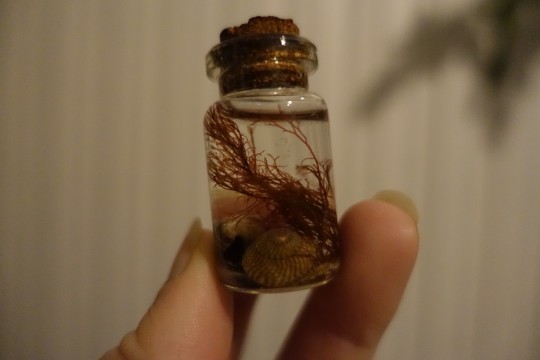
I feel it’s important as a nature witch to have experiences while you collect your items for your spells and/or rituals.
This gives you a personal connection with the items used and memories to go along with it 💙💚
I took my wee family to random hike down a slippy frozen slope, small thick forest with a steep drop off to the sea. It was a beautiful day, it snowed and we had the calm sea enjoying it all. She was still and so was our hearts as we skipped rocks before it snowed/slush rained 😅
Being from the Bahamas it was a super nice first for me, snow and sea or in norsk, snø og sjø.
🙏 ✨
46 notes
·
View notes
Text
I always see Athena being depicted with very magestic looking owls and I totally get it but I can’t get past the fact that the owl named Athene Noctua is this adorable little bugger.
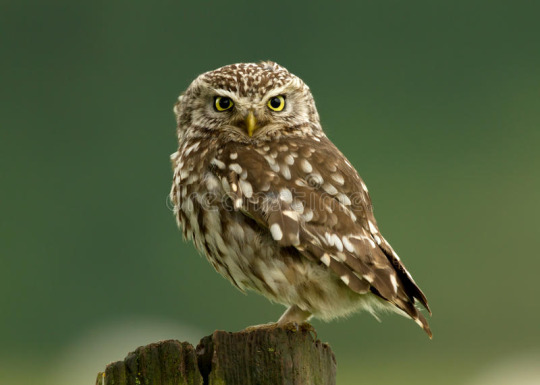
It’s just so fluffly and adorable and I just can’t deal with the floof.
Just LOOK AT THIS ADORABLE OWL.
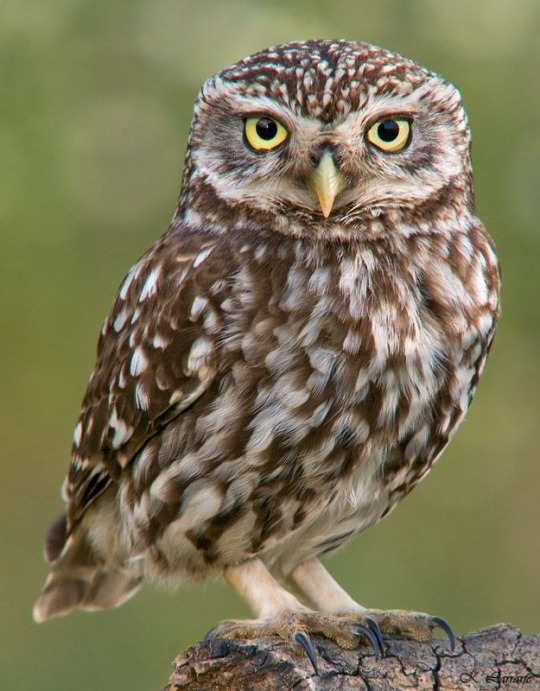
251 notes
·
View notes
Text

Take a break. You deserve it.
Instagram | Ko-fi | Redbubble
196 notes
·
View notes
Text
Nature Things That Make Me Smile
Feeling the sun against my skin
How soft grass is in the summer
Standing bare foot in sand
Smelling wildflowers
The sounds of squirrels running in the trees
Rabbits that let you get almost close enough to pet them before bolting
Deer that stare into your soul
Walking in creaks and streams
The smell of rain
Birds chirping
Rustling of leaves in the wind
Wild cats living in bushes
Babbling brooks
Dancing in the rain
Picking lilacs from my lilac bushes
Being surrounded by life while walking through the forest.
332 notes
·
View notes
Text
🌝Moon Phases🌚
Making plans and magick during the moon phases.
🌑New moon/Dark moon
The new moon is a time to set your intensions. This time should be taken to reflect upon the previous moon cycle and set intensions and manifestations for the next. A time for new beginnings and renewal, plant your seeds of intension on what you want to manifest, be clear in your goal setting.
Banishing
New beginnings
Reflection
Intension setting
Success
Happiness
Personal growth
Cleansing rituals
Health, love, romance, beauty or job searching
Deal with enemies
Uncover dark emotions
Understand passion, anger, and justice
Soul searching
Divination
Purification
Blessings
Cast curses and break curses
🌘Waxing crescent moon
This is the time to plan and prepare, also a time for new beginnings. If there is anything new coming into your life now is a good time to start or cultivate them. During this time we absorb energy more easily, whether it be good or bad. Write down or communicate any plans of action, and ways that you can being inspired action.
Patience, understanding, more positive attitude
Inspiring creativity and passion
Bring out inner beauty
Improve psychic abilities
Fresh energy
Conceptualise
Declaration
Positive magick
🌗First quarter moon
This is the time to take action. The first quarter is a time when energies are more conductive to attraction. Begin moving forward and putting your intensions and plans into action. This period symbolises strength, determination, concentration, and commitment.
Invite success, money, protection, and positivity
Perform rituals that draw external things to you
Attraction
Attracting friends, lovers, and clients
Attracting an animal companion or strengthening your bond with them
Lost objects
Momentum
Action
Growth
Strength
🌖Waxing Gibbous moon
This is the period to refine and hone your plans and intensions, this is the time to see your efforts through. Continue to work on the last stretch of your plans and ideas, this phase of the moon will help provide the renewed energy needed to so. This phase symbolises the final stage before the end of a project, the waxing gibbous is pregnant with your plans and intensions you set in the new moon until they are born at the full moon.
Constructive magick
Renewing your strength, will, and determination
Power boost for lost motivation
Good for ‘reeling in’ that which you have been working on
Finishing stalled projects
Attraction
Success
Health
🌕Full moon
Harvest your endeavours, the full moon is the time to finally complete the plans and intensions you set during the new moon and cultivated during the waxing phases. Tie up loose ends, this moon phase is all about completion, bring things to a close. This is a very powerful moon phase as it carries the most raw magickal energy, use this time of increased energy to practice your magick and spiritual development.
Moon water
Consecrate and charge
Invite success and achievement
Meditation
Divination
Psychic development
Dream work
Gratitude
Acknowledging the beauty of life
Acknowledge all you have created
Let go of aspects that no longer serve you
Protection
Healing
Creativity
Moon bathing
Job, career, and money spells
Love, romance, beauty, and friendship spells
🌔Waning Gibbous moon
Introspect. After the full moon we enter the waning half of the lunar cycle. Waning energies repel rather than attract. When doing meditation and divination this is a time better served for introspection rather than looking forwards to the future. Think about the plans and intensions you set during the new moon, cultivated during the waning phase, and completed during the full and be grateful. Release and let go of what foes not server you and absorb all the good you achieved during the full moon.
Cleansing negativity
Undoing curses
Letting go
Getting rid of energies
Introspection
Minor banishing
Ending
Practice gratitude
🌓Last Quarter moon
Release and let go. This is a good time to deal with obstacles blocking your oath and preventing you from moving forward. Allow the transformation of your accomplishments emerge with gracefulness. Continue to let go and release what does no serve you.
Deal with obstacles
Banish temptations
Deal with temptations
Transitions
Breaking bad habits
Cleansing
Banishing
🌒Waning Crescent moon
Rest and reflect. This is a good time to finish bigger banishing rituals, or to start them. Cut off any toxicity in your life, and get rid of anything you find seriously annoying and frustrating - save anything major for the dark moon. Take time to rest and reflect, contemplate and solidify your transformation. Prepare new seeds to be plated soon in the new moon.
Banishing
Cursing
Ending (stopping things in their tracks)
Relax
Reflect
Undoing curses
Cleansing
1K notes
·
View notes
Text
Write your Witchcraft

The thing is, we change. We are not the same person we were five years ago. Hel, a lot of us are not even the same people we were last week. We change, and our beliefs, favourites, thoughts and the way we see ourselves changes with it.
The same is true for our witchraft, religion and spiritual beliefs. This is why I have a list of question that I like to answer for myself every couple of years. I first started this when I came across a list of questions by Juniper from Walking the Hedge (site no longer in use) in 2008, yes, over ten years ago. Every few years I filled in the questions and looked back at the answers I gave before. Some never changed, some changed quite a lot.
When our coven started a new lesson plan, I gave out the list of questions as well. We sealed our answers in envelopes and plan to fill them in again, once we finish our lessons. Then open the envelopes and look at the answers side by side. To see how we have changed.
I looked at the list last week and found it actually lacking a bit. The questions were very deity- and spiritual based, so I was missing some more questions about my personality and witchcraft. So I decided to make my own list of questions!
Since I wanted to make this more a weekly journaling/grimoire prompt for myself I put together 52 questions. These can be answered weekly (maybe every year) or you can work through the list in one go and repeat that every few years or so.
Some notes on the wording: I consider myself both a witch and a pagan, but to keep it easier to read I only used wording like “witch” and “witchcraft”, they can however be substituted for “pagan”, “paganism” or even “my path”, should that fit you better. When I talk about “sacred space” this can both mean a ritual space like a temple or casting of a circle, but also just your home or outdoors witchy environment.
I’d love it if you would tag anything you feel comfortable with posting online with the tag #writeyourwitchcraft!
What draws me to witchcraft?
How do I see the divine?
What in witchcraft makes me happy?
Do I want to follow a path that has to do with a little nature, or a lot of nature?
What areas of witchcraft would I like to learn more about?
Where do my witchy talents lie?
What kind of deities, if any, do I want to honor?
How do I believe magic works?
Simple or elaborate spells/rituals? Why?
What are my views on cursing/hexing?
Do I want to practice something similar to my ancestors?
What are the basic morals and ethics I feel I should live by?
What in nature am I drawn to; the ocean, animals, the trees, etc?
Which (witchy) holidays, if any, would I like to celebrate and how?
How do I believe divination works?
Would I like to work with a group some of the time, all of the time or not at all?
Which aspects of witchcraft appeal to me most, which the least?
What do I believe happens to us when we die?
How do I see mythological creatures?
When do I feel most magical?
How much is witchcraft woven into my daily life; is this too much, too little or just enough?
What kind of witch do I feel I am?
Which texts/quotes best describe my current path?
Do I like research and gathering info, or do I like things handed to me?
Which things about witchcraft worry or scare me?
What is my favourite element?
How do I see gender (roles) in witchcraft?
Am I interested more in magic, or spirituality?
Do I like to be told how to do things, or would I rather figure it out on my own?
What rules, if any, do I live by when it comes to witchcraft and magic?
What do I gain from witchcraft and magic?
Formal or informal rituals/spells? Why?
What subject do I love to study?
What is my favourite type of magic; candle, sympathetic, sigils, etc?
What would my perfect witchy day be like?
Would I want to be dedicated/initiated?
Who do I honor (ex: deities, ancestors, myself, etc), and how do I, or would I like to, honor them?
How do I create a sacred/witchy space?
What do I believe is needed for a succesful spell/ritual?
Which cultures do I draw from in my witchcraft?
What is my learning style; books, websites, videos, more hands-on?
What, if anything, in my mundane life influences my witchcraft?
What are my hobbys, how do I (or can I) incorporate them in my witchcraft?
Where do my non-witchy talents lie, how do I (or can I) incorporate them in my witchcraft?
What would my dream witchy life look like? What steps can I take to work towards it?
What would my dream sacred space/witchy home look like? What steps can I take to work towards it?
What symbols correspond with me; runes, animals, flowers, gemstones, etc?
Am I an open and proud witch, or do I (need to) hide my craft?
What are my favourite witchy items/tools; divination tool, ritual tool, décor, clothing, etc?
What is holding me back in my craft?
What is my pre-spell/ritual routine?
What are my ultimate witchy goals and how can I work towards them?
14K notes
·
View notes
Text
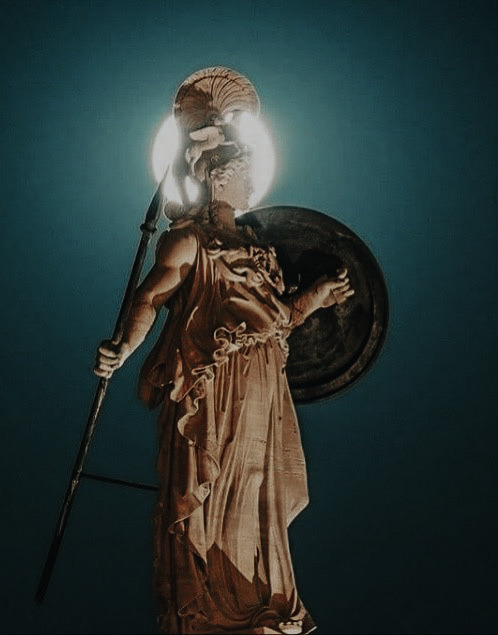
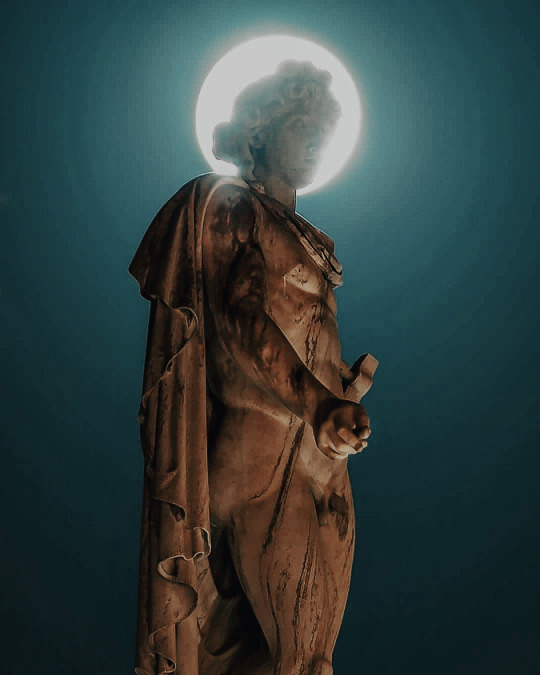
the statues of apollo and athena, at the academy athens, in a full moon night.
71K notes
·
View notes
Text
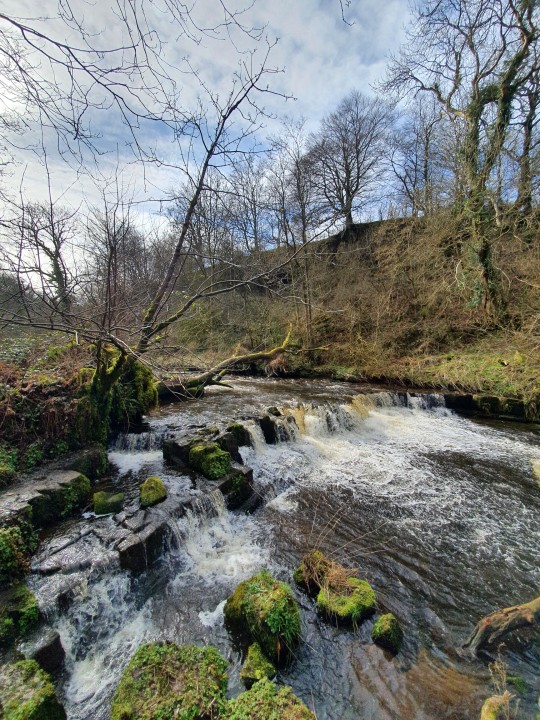
Lynn Glen, Dalry, Scotland 🌱
ig forest_elfie
52 notes
·
View notes
Text
Sand Dollar
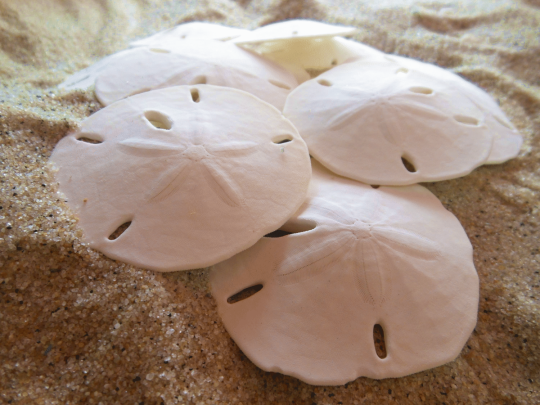
Magical Associations
Balance
Knowledge
Money
Wealth
Wisdom
Applications of Sand Dollar
Use in sea spells as a replacement for a pentagram
252 notes
·
View notes
Text
“She watched the sea shift and sigh, each wave a breath.”
— Inej Ghafa, Six of Crows (via dianaprincie)
2K notes
·
View notes
Text
Hey if u like the ocean look at this its rly cool I think
162K notes
·
View notes
Text
The trees: *exist*
Me: nice
The trees: *rustle slightly in the breeze*
Me: nice
49K notes
·
View notes
